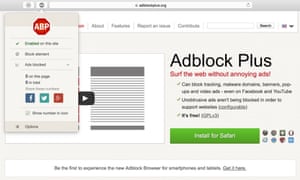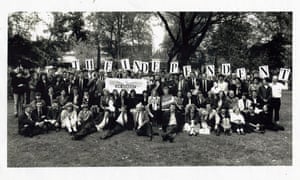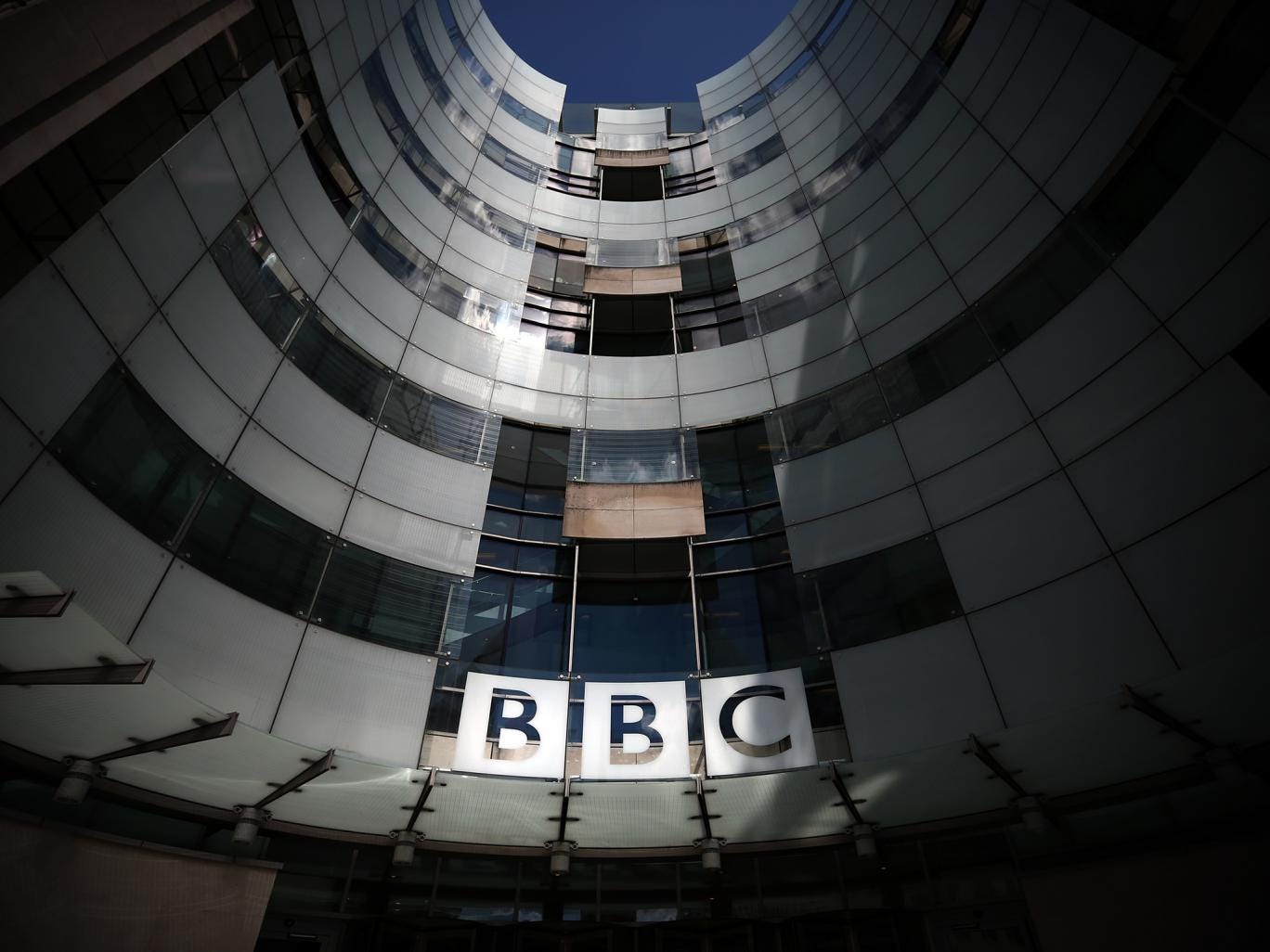Independent NDM case study: Media Magazine research
Notes and quotes: Media magazine
MM36 April Music and
poltics
“In today's digital media age, pop music's commodification
has been at the centre of debates around copyright, ownership and distribution.”
This quote tells me that the streaming service has brought a
certainty about the ownership and control of people music. As music is released
on one platform and another one takes it and the music isn't equal.
“Music industry profits from recorded music had been falling
before audiences moved from CDs to MP3s; but the issue of illegal downloads and
file sharing highlights the fact that music is seen as a product to be sold.”
This quote tells us about the profits made from CD to Mp3 to
now online services. Its decreasing so the music companies and artist are being
paid less. But the illegal downloads mean that their music is being played for
free and they won’t receive any chart sells or money for it.
“Traditionally most of the income generated by an artist
would have come from single and/or album sales.”
The music they put out there was bought one by one so when
the music streaming service came the customers pay a monthly bill and have a no
limit on their music choice. So it’s hard to calculate how much the artist
gets.
“Today the sale of the music itself is not necessarily the
best way to generate income: live shows, licensing music for public
performance, cross media tie-ins and corporate sponsorship are all successful
revenue streams for record companies and musicians.”
This is the alternative as the music artist may not make a
lot from their music being on online streams but they receive a lot of other things.
So there are other revenue streams for the artist and the music companies.
“Facebook and YouTube offer technologies that allow voices
from outside the mainstream access to audiences bypassing the traditional music
industry gatekeepers”
These service give the unsigned artist to put their music
out there for free to get their audience and try to enter the industry. The online
service doesn’t put unsigned artist on their service as they have no fan base
yet.
MM53 Spotify the
difference September 2015
“Not necessarily so. As Spotify explains, the free tier that
75% of users are experiencing contains adverts, all of which advertisers have
paid to place there. This revenue all goes into Spotify’s coffers, as do the
subscription fees for the paid tier, and it pays 70% of the overall revenue they
collect to rights holders – in other words, to the artists. According to its
figures, the amount of royalties that Spotify pays to artists doubled from 2013
to 2014, from half a billion to a cool billion US dollars.”
This tells us about the where the money goes with Spotify and
so we learn that 70% of revenue goes to the artist and so that is a lot because
the streaming service makes a lot money off subscriptions and adverts places.
So they keep their artists and customers happy and they have a stable revenue
stream.
“Audiences in 2015 are less concerned with owning music than
having access to it, and are willing to pay for that privilege”
People want to have access to music and don’t care about
owning so they would do anything to have access and that is by even illegal download.
That means if the quality is low so they just want to access the music because
of new and digital media.
David Byrne asked in The Guardian:
“Are these services evil? Are they simply a legalised
version of file-sharing sites such as Napster and Pirate Bay – with the
difference being that with streaming services the big labels now get hefty
advances? ... What’s at stake is not so much the survival of artists like me,
but that of emerging artists and those who have only a few records under their
belts.”
This is artist view on the music streaming saying that the
new artist trying to have a come up are going to struggle and will struggle to
attract an audience because it is harder to are going to struggle and will
struggle to attract an audience because it is harder to have access to their
music.
“But the story briefly shed light on a real issue: how the development
of these new platforms is revitalising parts of the music industry, and changing
the playing field once again for artists”
This is the real question as the new streaming service are
going against the music artist as their label invest a lot of money into their
studio, music videos, promote and other things to produce the music. Then their
music is being release on these platforms by subscription so the online service
get money but it’s not certain what the artist and company get.
“It was announced in early November that Swift would be
withholding her new album, 1989, from music streaming service Spotify. Shortly thereafter,
she pulled her entire back catalogue from the site. Spotify retaliated quickly
by publishing a blogpost declaring their continued love for Swift and their
hopes that she’d return. They also presented some astonishing statistics
illustrating her popularity on the platform: 16 million of the site’s 40 million
users had streamed her songs in the previous 30 days.”
This is an example of an artist putting their foot down and doesn’t
want her music to be on the streaming service because she wants to get the
money back she deserves. However, her fans on Spotify were still with her as
they played her music on them for next 30 days. Artist are against streaming service
sand the fans are the most important.
“I’m not willing to contribute my life’s work to an experiment
that I don’t feel fairly compensates the writers, producers, artists, and
creators of this music. And I just don’t agree with perpetuating the perception
that music has no value and should be free, Taylor swift 2014”
This tells us how she felt about her music going on a
streaming service and she isn’t not happy about it. As she believes as she has
put a lot of money in to producing her music and then she believes it going out
for free with these streaming service. She thinks its devaluing music and
saying her music isn’t worth nothing.
“five million people in the UK download over one billion
tracks a year using peer-to-peer file sharing programs, creating 126 million
CDs using computer CD writers.”
Illegal is increasing as maybe the cost of music is too much
for them they just want to be able to hear the music from their favourite
artist music. So this tells the audience don’t care about the quality they want
the access to the music and so they would not have that if it wasn’t for new
and digital media.
MediaMagazine 5, The
future’s bright the future’s virtual - music and the internet 2003
“In April 2003 EMI was the first of the big five record
companies to make the majority of its music available online (90% or around
140,000 tracks)”
This shows us when the first music company put their music
online for their fans to access. It was for free for just to appreciate music and
not for the money.
“As the number of broadband connections rises, we may see a
new way of purchasing music become the accepted standard. Legitimate downloads
are now tracked to create a weekly chart, a sign of growing acceptance. It is
predicted that almost 20% of all music sales will be in digital format within
10 years”
This was 13 years ago so they predicted it and so it may be
even more than this. As music sales digital format are the only thing everyone
is listening on as CD’s are not being used anymore. As everyone either has an iPod
or smartphone to by their music on to listen with their headphones on the move
“At the moment there are two ways of buying and downloading
music from the Internet: subscription and pay-as-you-go”
So the subscription is the online streaming service where
you pay monthly to access to all of the music you want. The pay as you go as
you pay for the music you want and listen to its whenever you want. The
subscription is you have a variety of music to choose from but the pay as you
go is just the songs or album you want on your device.
Independent NDM case
study: Media Factsheet research
Music industry
“The music industry is a global business that generates
profit by selling musical recordings in both physical and digital formats to
media audiences. The music industry is a complex and competitive business and
record companies and labels are continually devising new ways of attracting
audiences to consume their products”
This tells us how the record labels make money and that is
through physical copies and digital format. This is through new and digital
media as digital format has increased over the years and physical copies
decline.
“In order to generate revenue a record company or record
label enters into a recording contract with an artist. This contract means the
record label will fund the production, marketing and distribution of the
artist’s recordings”
The artist who is signed will get money from their label to
help push their project and make it better quality as they get them in a good
studio. This then is released to the audience and hopefully the project sales
well.
“Funds from the sale of the music will be used to pay off
the expenses incurred by a record label and the artist will receive royalties
from the profits made after costs are met”
The artist will only make money if the revenue makes up the
cost so then they get royalties as the expenses of markets, studio time and
advertising money is covered. The revenue goes to the record label for their
contribution to the artist project.
“The Internet has now provided artists and individuals the
opportunity to launch independent record labels known as Net Labels. These
companies operate by distributing music primarily through digital audio formats
via web sites on the internet. The MP3 format has allowed for easier
distribution of music by individuals and the use of global websites such as My
Space are playing a big part in promoting new bands”
This tells us how new and digital has impacted the music
industry unsigned artist can promote and distribute their music on websites and
apps such as social media such as MySpace to build a fan base.
“Record companies must market the music correctly in order
to attract the intended target audience. The mass media, specifically the
Internet, radio, television and the music press play an important role in the
distribution and marketing of music to the intended target audience.”
This how record label money goes into marketing and
advertising the artist music to target the audience and attract new audience.
• Radio: plays an important role in promoting the artist
via frequent airplay on popular channels. In 2004 the official downloads chart
was launched and runs alongside the conventional music chart. This has provided
artists with more opportunity for radio exposure
• Television: the popularity of music channels such as MTV
helps promote a recording artist’s image and sound to a global audience.
• The Music Press: have close relationship to the music
industry and are very influential in the marketing and promotion of new
recording artists.
• The Internet: official websites help reinforce the image
and sound of the recording artist. Websites offer the opportunity for continual
and up-to-date promotion and the popularity of chat rooms; message forums and
blogs also enable fans to communicate with other fans.”
These are the main 4 on how they advertise and market their
artist product to keep their relevant and attract their audience. But things
have changed as new and digital media has allowed people to keep up with by
YouTube as Vevo releases from big music artist who are signed and they receive
100,000,000’s of views. So the television music channel is not needed that much
nowadays. Same with music press as online social media put their articles on
social media to promote artist new music.
The Changing Face of
the Music Industry
“An example of this is how Adele was signed. Her friend
posted her demo to MySpace in 2006; she was picked up by XL Records, but to
break into the U.S market she had to sign to Columbia records which is owned by
Universal Music Group in order to break the American market.”
This is example of new digital media help the success of
popular music artist such Adele. Myspace was one of the platforms to put music
out there for new music artists to touch their fan base and build a fan base.
But with streaming service your music cannot be played on their because they
are not signed yet. So this shows the streaming service doesn't give an
advantage to the new artist just the well known artist.
“In many cases artists are able to promote and distribute
their music digitally without the assistance of a record label. Unsigned
artists can sell their music on iTunes, have it streamed on Spotify or Soundcloud
and produce their own videos for YouTube.”
This shows the new digital media you don’t need the music
company backing you with the money for music videos to be played on the TV and radio.
As they can put their music mixtape on album on platforms and then music videos
on YouTube. They can reach their fan base and new fans they like their music as
they have the chance to reject or accomadate.
“How audiences are purchasing and consuming music has
changed dramatically with the emergence of digital technology and the music industry
has struggled to keep up at times and this is especially true when it comes to
changing audience behaviours. One of the most problematic issues that the
industry is facing is the ‘culture of free’. In recent years consumers are less
willing to pay for their music and as a consequence piracy and file-sharing
have seen the industry lose billions over the last decade. According to the
Institute for Policy Innovation global music piracy causes $12.5 billion of economic
losses every year. In order to combat this music streaming services such as
Spotify have worked in conjunction with the industry to try offer audiences the
opportunity to listen to music but not actually download it, which means it is
not being shared YouTube has also placed ID content censorship on videos to stop
music being downloaded.”
Music industry is losing money because the audience receive music
free by the streaming service as it’s a subscription the pay once a month. Some
audience don’t even want to pay for the streaming service so they illegally
download it.
Independent NDM case study: Up-to-the-minute web research
http://www.theguardian.com/music/2016/mar/03/tidal-next-music-streaming-service-drown
Will Tidal be the next music streaming service to drown?
The company bagged exclusives from Kanye West and Rihanna, who released the biggest albums of 2016, but it still has daunting challenges
Spotify beefed with Taylor Swift and got sued by songwriters; Apple messed with people’s iTunes collections and was accused of sexism; and Deezer abruptly cancelled plans to go public in 2015.
The star power of its co-owners – Jay-Z, Beyoncé, Madonna and more – hasn’t spared it from criticism and derision.
http://www.theguardian.com/music/2016/mar/03/tidal-next-music-streaming-service-drown
“The company bagged exclusives from Kanye
West and Rihanna, who released the biggest albums of 2016, but it still has
daunting challenges”
They have use their music relationship be
the only streaming service to release them so both their audience can sign up
to tidal.
“Spotify beefed with Taylor Swift and got
sued by songwriters; Apple messed with people’s iTunes collections and was
accused of sexism; and Deezer abruptly cancelled plans to go public in 2015”
This allows tidal to take up their
competitive advantage over the rest and be the best streaming service. As the
others are having many problems.
“The star power of its co-owners – Jay-Z,
Beyoncé, Madonna and more – hasn’t spared it from criticism and derision”
However, because of their massive star
power they still are on the receiving end of critics
“Yet this is a streaming service that
managed to bag those exclusives on the two hottest albums of 2016 so far. It
also claims to have grown from 500,000 paying customers in March 2015, to one
million by October, and now reportedly 2.5 million in February 2016 after a
Kanye-fuelled surge – even if it is unclear how many of those new subscribers
are on a free trial”
Because the Tidal use the co ceos albums
releasing them on their service allows them to receive more paying subscribers
for the artist fans to receive another album. They received a million in a year
and they are all paying not on free trial.
“In 2014, Spotify grew from 36m users to
60m, including 15m paying subscribers. While its revenues that year were
€1.08bn, its losses were €162.3m, and while it has yet to publish its 2015
figures, they are likely to show more heavy losses.”
These are there competition independent
streaming service who have been in the game for a long time
“However, a short time after its launch on
Tidal, West apparently decided to delay the release, writing on Twitter:
"My album will never never never be on Apple. And it will never be for
sale... You can only get it on Tidal."
Kanye west is a co-owner of tidal and so
his fan must download Tidal to purchase the album
“The download page was pulled, but some
customers were left in the lurch - they had paid their $20 to Tidal for the
album, but the launch was cancelled and they never received a download link”
The fans were upset because of the delay
and so they paid for tidal and never got the music and now they may have a bad
reputation with the artist’s fans.
“Music streaming is on the rise: in 2015 in
the UK fans played 26.8bn songs on audio-streaming services alone, with another
26.9bn streams of music videos on services like YouTube”
The music streaming service is growing everything
is digital now and the fans feel its easy to access music with these services
"March 2016 over 3 million users"
“Tidal is now co-owned by a starry group of
artists, and is trying to make headway against its richer rivals. The odd
exclusive from Prince and Rihanna aside, its main appeal is its
higher-resolution tier – good for audiophiles.”
lil wayne and T.I recently joined
It’s the high quality sound tidal offers
that not many other streaming services offer
“This morning, Tidal is riding high in
Apple’s US top-grossing apps chart: in fifth place, it’s making more money (on
iOS) than Candy Crush Saga, Pandora and Netflix”
Successful in the app stores as more people
are downloading it and them signing to the subscription
“What’s happening here? One explanation is
people converting from 30-day free trials that they signed up to in
mid-February when Kanye West released his ‘The Life of Pablo’ album exclusively
on Tidal.”
The app being installed is because of the
release of anticipated album life of Pablo only on tidal so all of his fans wanted
to hear
“At one point yesterday, Tidal was
out-grossing Spotify in the US App Store, although it’s since fallen behind
again.”
This usp is helping them to be attract new customers
and climb over their other streaming rivals
“Tidal has extended its free trial period
by 30 days so users can hear updates Kanye West is making to his latest studio
album 'The Life Of Pablo. Kanye West continues to deliver new music exclusively
to TIDAL," the streaming service wrote in a message to users yesterday
(March 16). "Listen to the new version of 'Wolves' and the new song 'Fade'
now that was just added to 'The Life of Pablo'.”
it was streamed 250 million times the first week it went number one on the 9 of the April
This is the latest new as tidal want their
customers to be satisfied with the service and hopefully just be permanent
users and pay the subscription
“The rapper released the album, his seventh
record to date, in February, with the LP airing exclusively via Jay Z's music
streaming service Tidal. West took the album off-sale a day after its release
to continue work on it and has since hinted that it may never be released
commercially, further proclaiming that CDs are dead.”
Tidal is his main focus to release his
music only on this platform as he is a co-owner
http://www.nme.com/news/kanye-west/92092
“uuuuuuum, so there it is... No more CDs
from me
the Yeezus album packaging was an open
casket to CDs r.i.p
I was thinking about not making CDs ever
again... Only streaming” Kanye west tweets
These tweets are from one of the most successful
rappers and he has seen the new and digital media grow in his own eyes and he
says its dead and will take the opportunity of the digital platform
http://qz.com/383109/the-music-industry-has-hit-its-rock-bottom/
5% of all smartphone users, or more than 250 million people, will be paying for a streaming music subscription
Streaming subscriptions cost roughly $120 a year, which is more than the average consumer spent on music even back in the industry’s heyday. So there is a scenario on the horizon where a reasonable portion of consumers will be spending more money on music than ever before.
https://en.wikipedia.org/wiki/Tidal_(service)
- Tidal preminium USD $9.99
- GBP £9.99
royalty percentage of any current music streaming company, with approximately 75% of members subscription fees being given to record labels for individual artist and songwriter distribution
"Will artists make more money? Even if it means less profit for our bottom line? Absolutely. That's easy for us. We can do that. Less profit for our bottom line, more money for the artist; fantastic. Let's do that today."
The service has over 25 million tracks and 85,000 music videos
Tidal claims to pay the highest percentage of royalties to music artists and songwriters within the music streaming market.
http://9to5mac.com/2015/04/07/what-apple-streaming-service-needs/
The promise of exclusive content is the service’s biggest selling-point so far unless high fidelity streaming is important because, well, everything else is lackluster.
lacks content from indie or lesser-known artists
Exclusive content means early access to albums, live sessions, music videos, or anything other than playlists.
Tidal is also expensive. The “high-fidelity” tier of streaming costs $19.99 a month, but for my use, Tidal’s high quality streaming isn’t any better than streaming from other companies’ standard tiers. Tidal does offer a standard streaming plan at $9.99 a month.






